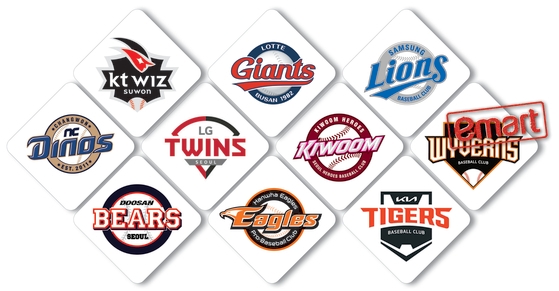
야구중계의 본질은 ‘결과’보다 ‘과정’을 보는 시선에 있다. 2025 시즌 MLB와 KBO는 그 어느 때보다 데이터 중심의 중계 환경으로 발전했다. 투수의 구종 분포, 타자의 타격 각도, 수비 시프트까지 중계 중 실시간으로 시각화되며, 팬들은 단순한 경기 시청자가 아닌 ‘데이터 해석자’로 변화하고 있다. 슈퍼팡티비와 쿠팡플레이, SBS Sports는 경기별 해설 시점마다 각종 지표를 실시간으로 표시해, 경기의 흐름을 정량적으로 이해할 수 있게 했다.
실시간 중계 채널별 편성표
아래 표는 MLB와 KBO의 대표 경기 중계 채널 및 편성 정보를 정리한 것이다. 중계 시간은 매주 변경되므로 공식 편성표를 함께 확인하는 것이 좋다.
| 리그 | 주요 경기 | 중계 채널 | 방송 시간 (KST) | 플랫폼 특징 |
|---|---|---|---|---|
| MLB | 다저스 vs 메츠 | SPOTV NOW | 오전 11:40 | 실시간 통계 연동 |
| KBO | LG vs 두산 | SBS Sports | 오후 18:30 | 국내 해설 중심 |
| MLB | 양키스 vs 보스턴 | 쿠팡플레이 | 오전 10:05 | 모바일 HD 방송 |
| KBO | SSG vs KT | 네이버스포츠 | 오후 18:30 | 인터랙티브 채팅 |
| MLB | 시애틀 vs 텍사스 | MLB TV | 오전 11:00 | 글로벌 해설 동시 송출 |
이 구성은 경기별 시청 채널을 빠르게 파악하고, 플랫폼별 장점을 비교할 수 있게 해준다.
투수전의 데이터 포인트
투수전의 핵심은 단순히 구속이 아니라 ‘구종의 흐름’이다. 2025년 MLB 투수들의 평균 구속은 시속 151km, KBO는 145km 수준이지만, 구속보다 중요한 건 구종 선택 비율이다.
- MLB 평균 직구 비율: 47%
- KBO 평균 직구 비율: 56%
- MLB 슬라이더 사용률: 24%
- KBO 포크볼 사용률: 18%
이 수치는 단순한 투구 패턴이 아니라, 리그별 경기 철학을 보여준다. MLB는 구종 다양성으로 타자의 예측력을 차단하고, KBO는 제구 중심으로 안정적인 경기 운영을 택한다. 이 차이는 중계 중 던지는 구종 그래픽에서도 명확하게 드러난다.

타격 데이터로 보는 실시간 경기 분석
타격 데이터는 경기의 방향을 바꾸는 결정적 요소다. OPS(출루율+장타율), BABIP(인플레이 타구 성공률), wRC+(득점 기여 지표)는 스포츠중계 중 가장 많이 언급되는 세 가지 핵심 데이터다.
| 데이터 | 의미 | 주요 해석 포인트 |
|---|---|---|
| OPS | 출루율 + 장타율 | 공격 효율 전체를 대표하는 지표 |
| BABIP | 인플레이 타구 성공률 | 운·수비 요인 반영 여부 확인 |
| wRC+ | 득점 기여도 | 팀 전략 중심 지표, 100 기준 평균 |
중계 중 해설자가 이 데이터를 언급할 때, 팬은 단순한 타구 방향보다 ‘선수의 타격 컨디션’과 ‘팀 전략 수행 능력’을 함께 판단할 수 있다. 데이터를 기반으로 한 시청은 경기의 리듬을 예측하는 가장 확실한 방법이다.
야구중계에서 전술을 읽는 세 가지 관전 포인트
야구는 데이터 중심 스포츠지만, 여전히 인간적인 리듬이 살아 있다. 중계 중 다음 세 가지를 중심으로 경기를 보면 훨씬 깊게 이해할 수 있다.
- 투수 교체 타이밍: 불펜 운영의 핵심, 데이터보다 감각이 중요한 구간
- 수비 시프트 변화: 타자의 타격 성향에 따라 포지션 이동 확인
- 주자 리드 폭: 감독의 공격 의도와 경기 템포를 읽는 지표
이 세 가지 포인트는 중계 해설보다 직접 보는 게 더 정확하다. 팬이 이런 흐름을 캐치할 수 있을 때, 단순한 시청에서 ‘해석자 시청’으로 수준이 바뀐다.
데이터가 바꾼 중계의 미래
2025년 실시간 야구중계는 AI 분석과 연동되어 경기 중 자동 데이터 피드백을 제공한다. AI는 투구 위치, 타격 각도, 타구 속도를 실시간 계산해 그래픽으로 시각화한다. 이는 중계 해설의 한계를 넘어, 팬 스스로 분석할 수 있는 환경을 만든다. 중계 플랫폼들은 경기 종료 후에도 요약된 리포트를 제공하며, 사용자는 주요 장면을 클릭해 ‘데이터 기반 하이라이트’를 직접 확인할 수 있다. 데이터는 이제 중계의 부가 요소가 아니라, 경기를 이해하는 핵심 언어다.
